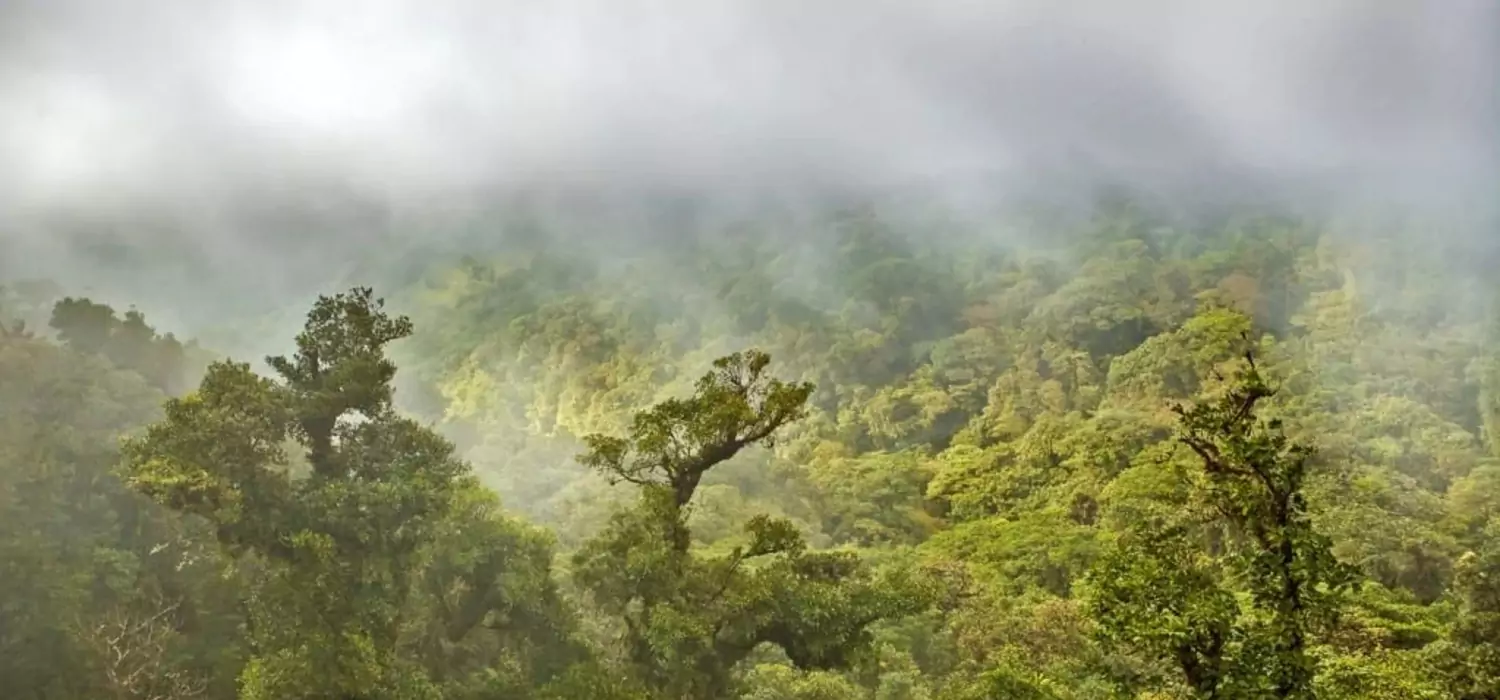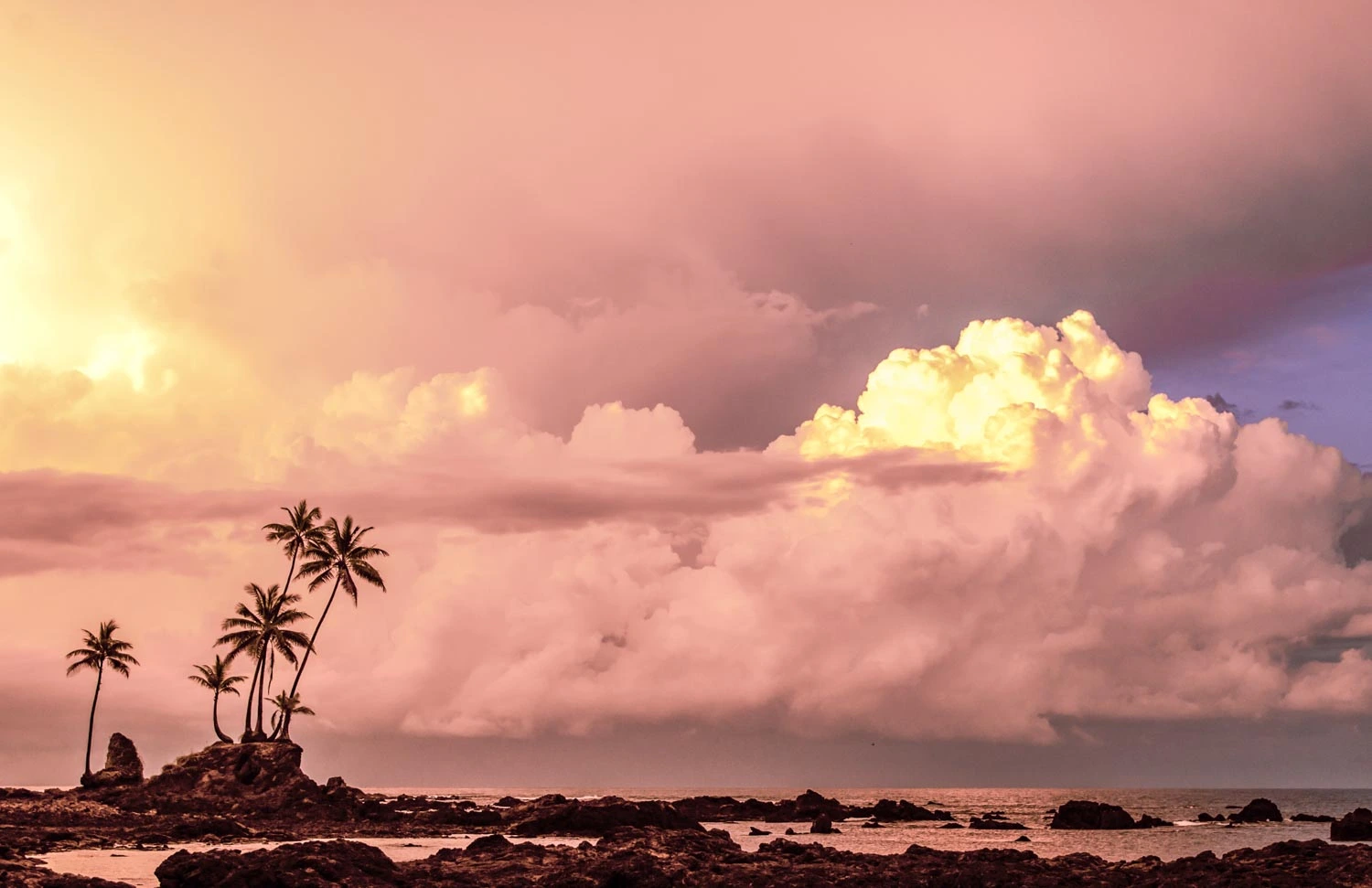HOTELS
ACTIVITIES
WEATHER
GETTING THERE
COMBINE WITH
Costa Rica’s South Pacific
In Costa Rica’s South Pacific region, the Talamanca Mountains descend to coastal plains and fertile deltas. This area has been home to palm and fruit plantations for decades; tourism infrastructure was developed only recently. This is the next Costa Rica: natural, unknown, and awash in off-the-beaten-path vacation opportunities.
The South Pacific highlands are home to several of Costa Rica’s indigenous communities: the Bribri, Boruca, and Guaymi. Many of the communities welcome outsiders, offering to teach visitors about medicinal plants, cosmology, dance, and traditional handicrafts.

Finca 6
Just outside the river town of Sierpe, an archeological park known as Finca 6 protects dozens of massive pre-Columbian stone spheres. A former banana plantation of United Fruit Company, this site is home to the largest collection of these spheres still in their original astronomical alignments. Averaging nearly five feet in diameter and weighing several tons, these stone wonders were likely used to mark seasonal shifts and sacred architecture.
Sierpe is also the site of one of Costa Rica’s most vibrant mangrove habitats—home to herons, cotingas, crocodiles, iguanas, and monkeys. Full and half-day wildlife-watching tours are also available.
Golfito
The port town of Golfito, 55 miles southeast of Sierpe, is nestled in a beautiful bay, on the northeast corner of the Golfo Dulce—the Gulf formed by the Osa Peninsula. Some of the best sport fishing captains in Central America are based here. Record catches are commonplace.

Zacundo
The eastern edge of the Golfo Dulce is surf country. Zacundo, located 15 miles southeast of Golfito, offers one of the country’s best beaches—a quiet, crowd-free, black sand beauty, great for swimming.
Farther south, the town of Pavones lays claim to the second-longest left surf break in the world (The longest left is a windy stretch of Peru’s Chicama coastline—nowhere near as inviting as the palm-shaded Pavones). This break is gentle and forgiving—a great place for beginners and paddle boarders alike. Surfing and kite surfing lessons are both available.
This gulf is a world-class venue for sailfish (January to April), marlin (June to October), and roosterfish (April to December). Full and half-day charters are available, often including time for snorkeling and whale watching.
Piedras Blancas
On the northern Gulf shore, the Piedras Blancas National Park protects rainforest and beaches, inhabited by Scarlet macaws, monkeys, ocelots, and toucans. Despite its natural beauty and fine trails, the park is rarely visited. Regularly reaffirmed by guests of the two comfortable eco-lodges bordering the rainforest, Piedras Blancas feels like a private park.
Wilson Botanical Garden
Another of our favorite stops is the Wilson Botanical Garden, near San Vito. Founded in 1961 by Robert and Catherine Wilson as a coffee plantation, these gardens have evolved into a sprawling, 635-acre park. Here you’ll find one of the world’s largest collections of palms (over 700 species), as well as hundreds of bromeliad, orchid, and heliconia species.
Visitors can stay in the garden’s lodge, enjoying guided or self-guided birdwatching and plant tours.
Our Favorite Hotels
What to do in the Southern Pacific
Activities in Costa Rica extend over land and sea. This section of the Pacific Coast is still slow-paced. Here you can relax, recharge, and explore the coast and inland rainforests. Imagine surfing, hiking to a waterfall, enjoying an afternoon siesta or massage, and closing your day with sunset whale watching. Here you can learn about native cultures, whale watch, sport fish, surf, and visit some of the country’s least-known, most rewarding protected zones.
LANDED arranges privately guided experiences with our clients’ unique interests in mind. We’ve tailored experiences such as:
- Snorkel and scuba diving at Caño Island
- Ziplining at Osa Mountain
- Surfing world-class waves
- Horseback riding to Nauyaca Falls
- Whale and dolphin watching
- Kayaking in the mangroves or in the Pacific
- Whitewater rafting the Savegre River
- Rappeling down a waterfall
- Hiking in Corcovado National Park
- Sport fishing
Guests to this area can also enjoy several self-guided activities such as:
- Enjoy a beach day
- Visit the Indian Tribe of Baruca
- Explore Ballena National Park
- Visit Local Waterfalls
- Visit the Alturas Wildlife Sanctuary
- Spend a Morning Bird-Watching
May and June transition from the dry season to the rainy season. The weather is more unpredictable and tends to get rainier toward the end of June. Waves are larger for surfing; orchids are at their peak; sail fishing starts and sport fishing gains traction. Now the rivers are really flowing so it’s a great time for whitewater rafting and waterfall rappelling.
Beginning in September, the humpback whales arrive from Antarctica. This time is ideal for spotting other animals as well, such as monkeys, sloths, frogs, coatis, butterflies, and tons of birds.

What is the Weather Like?
Costa Rica is located in the tropics and close to the equator and is considered a rainforest country with warm temperatures being characteristic throughout the year. There are two well-defined seasons:
Dry Season: December – April
Green Season: May – November
The rain, especially on the Pacific coast, typically occurs during the afternoon or evening and is “warm”. You’ll experience a short mid-year mini Dry Season towards the end of July and the beginning of August when rainfall decreases significantly for 3-4 weeks. The rainiest months are September and October, especially in the South Pacific region.
High temperatures on the South Pacific Coast range from 82°F to 86°F. January through April have the highest temperatures, this season is perfect for uninterrupted beach time, including humpback whale watching. Swim, snorkel, and scuba diving in warm ocean waters, and learn to surf–the waves are at an ideal height for lessons. The green season brings fewer crowds, and unpredictable weather along several benefits of the high waters. It is one of the best times for sport fishing, whitewater rafting, river and waterfall swimming, and sea turtle viewing.
These averages are changing, please check extended weather forecasts using your favorite weather app prior to departure.

Getting There
South Pacific Costa Rica was nearly unreachable a few years ago. Thanks to the 2010 completion of a well paved highway, guests can now reach the South Pacific in approximately 3.5 hours from San Jose. LANDED can cut that travel time with private charter flights.
Visits to the South Pacific region can be conveniently paired with time on the Osa Peninsula, Dominical & Uvita, Manuel Antonio, or San Gerardo de Dota.
Start your journey today
LANDED delivers the finest in custom, private travel to Central America, South America, and Antarctica. These regions are our passion; we know them first-hand and by heart. Speak with one of our travel designers and let us create a tailored itinerary for you in the South Pacific.
How to combine the South Pacific
Have some extra time? Here are some options for you to combine with

Dominical & Uvita

Manuel Antonio

San Gerardo de Dota

Southern Nicoya




